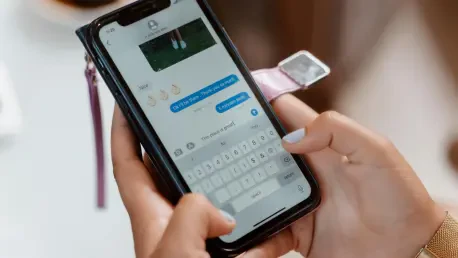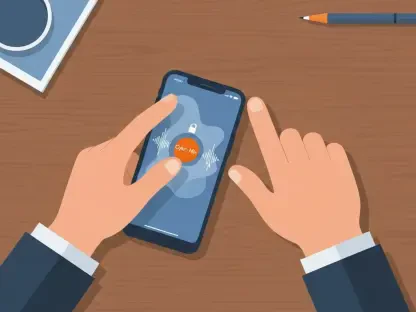The ability to communicate in areas devoid of traditional cellular network coverage has long been a challenge in the quest for reliable global connectivity. Elon Musk’s Starlink Direct-to-Cell service, unveiled on July 15, marks a significant leap in addressing this challenge by enabling direct communication between mobile phones and Starlink satellites. This progression from satellite internet to direct-to-phone connectivity opens new opportunities for those residing in, or traveling through, remote regions. While currently limited in functionality, this service’s potential impacts could be profound, especially for emergency communications and remote business operations.
Bridging Connectivity Gaps
Pioneering Technology in Remote Areas
Starlink Direct-to-Cell is optimized for text messaging and location sharing, rather than offering complete mobile broadband services initially. As it stands, this technology serves remote locales excellently, providing essential communication channels where normal cellular towers are sparse. Its advantage is particularly evident in rugged terrains like mountainous zones or sprawling countryside landscapes that challenge traditional network deployments. By using satellites instead of terrestrial towers, this approach sidesteps the limitations posed by nature and infrastructure costs, vastly improving connectivity where there was little to none.
The seamless use of this technology is commendable because it does not require users to adjust their device settings or install additional apps. An automatic satellite link is activated whenever traditional signals are inaccessible. This feature particularly enhances the utility of the system by simplifying user experience. Focus is placed on ubiquitous communication without necessitating additional hardware such as antennas, which often complicate matters and may deter widespread adoption. The absence of such constraints encourages broader utilization, potentially altering the way people access mobile services globally.
Device Compatibility and Adoption
However, the technology does have certain limitations concerning device compatibility. Only more recent mobile models are currently equipped to utilize this service. For iPhone enthusiasts, only versions 14 through 16 are supported. Meanwhile, the spectrum is broader for Android users, encompassing Google Pixel 9 and newer models and a host of Samsung and Motorola devices. These disparities indicate that users with older devices may need to upgrade to partake in Starlink’s satellite services, potentially influencing purchase decisions as the technology becomes more integral to daily communications.
The reach of Starlink Direct-to-Cell also faces regulatory and logistical hurdles. In regions like Spain, the service remains offline due to pending agreements with local providers, indicating the complexities involved in coordinating satellite telecommunications on a global scale. Agreements in other regions, including the United States, Canada, and Australia, have already laid the groundwork for deployment, showcasing a phased rollout that reflects the necessary collaborations between satellite and terrestrial communications providers. The timeline for Spain’s inclusion, tentatively set between late 2025 and early 2026, suggests a gradual but inevitable expansion.
Future Prospects and Challenges
Expanding Capabilities and Usability
Plans to extend Starlink Direct-to-Cell’s capabilities to include voice calls and mobile data underscore its evolving nature. This transitional phase, from mere messaging to comprehensive smartphone functionality, requires significant time and technological adjustments. As satellite connectivity strives to match or surpass the effectiveness of traditional networks, it’s crucial to address battery efficiency, which presently suffers due to the higher energy demands of satellite operations. While its current emphasis on low-data tasks like messaging mitigates some battery strain, future enhancements will need to maintain this balance to prevent user inconvenience.
Financially, the integration of this feature into existing mobile plans without extra charges makes it an attractive option for consumers wary of additional costs. This model could be pivotal in positioning Starlink Direct-to-Cell favorably in a competitive market, offering more bang for the buck while ensuring broader consumer adoption. As service capabilities expand, maintaining such pricing strategies will be essential to secure a foothold against rivals who might be grappling with integrating similar satellite tech into their offerings.
Overcoming Connectivity Barriers
The challenges inherent in Starlink’s endeavors go beyond technological limitations, delving into areas of policy and consumer adaptation. Countries with varying telecommunications regulations may require bespoke agreements, complicating instantaneous global availability. Users acclimated to traditional mobile network service might exhibit reticence towards satellite-based alternatives due to perceptions of reliability or speed. Educating consumers about its benefits and potential limitations will be critical in garnering widespread acceptance of this nascent technology.
Collaborations between companies like Starlink and local telecommunication powerhouses hold the key to unlocking its full potential. By working within established frameworks and addressing logistical concerns, these partnerships can significantly expedite integration into mainstream use. As these collaborations advance, a new era of universally accessible communication across previously unserviceable regions will be attainable, echoing a global reach reminiscent of the dreams of interconnected societies.
Looking Ahead to a Connected Future
The need for reliable communication in areas without traditional cellular coverage has long posed a significant challenge. This challenge has impeded efforts to achieve consistent global connectivity. However, the introduction of Starlink Direct-to-Cell service by Elon Musk on July 15 marks a pivotal development in this area. This innovation facilitates direct communication between mobile phones and Starlink satellites, bypassing traditional cellular networks. By progressing from satellite internet to direct phone connectivity, the service presents new opportunities, especially for those living in or traversing remote locations. Although its current functionality is somewhat limited, the potential impacts could be substantial, particularly for emergency communications and remote business operations. Such advancements could transform how we communicate in isolated regions, where conventional networks fail to provide service. The evolution of this technology could change the way individuals and businesses operate, ensuring connectivity even in the most inaccessible areas.









